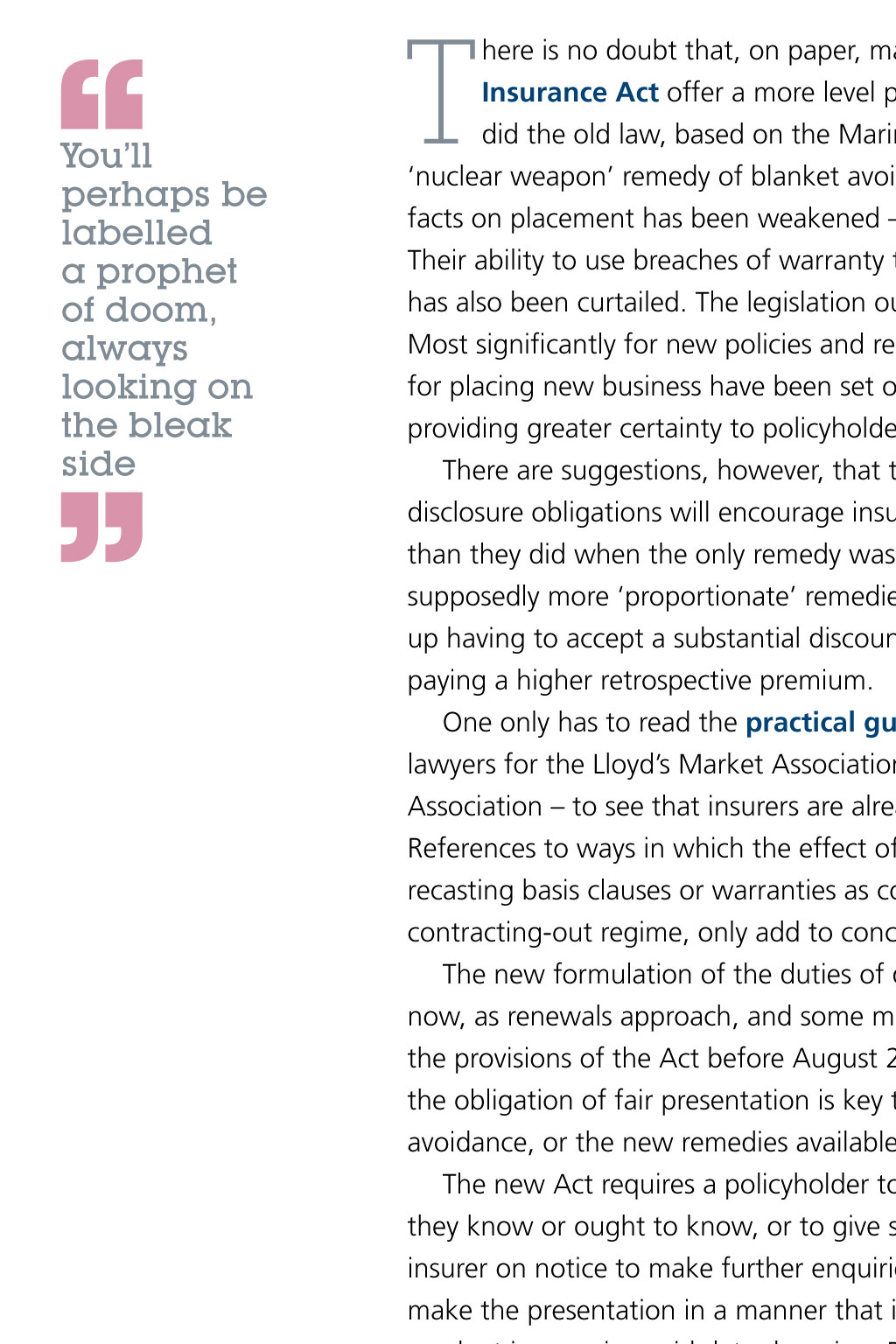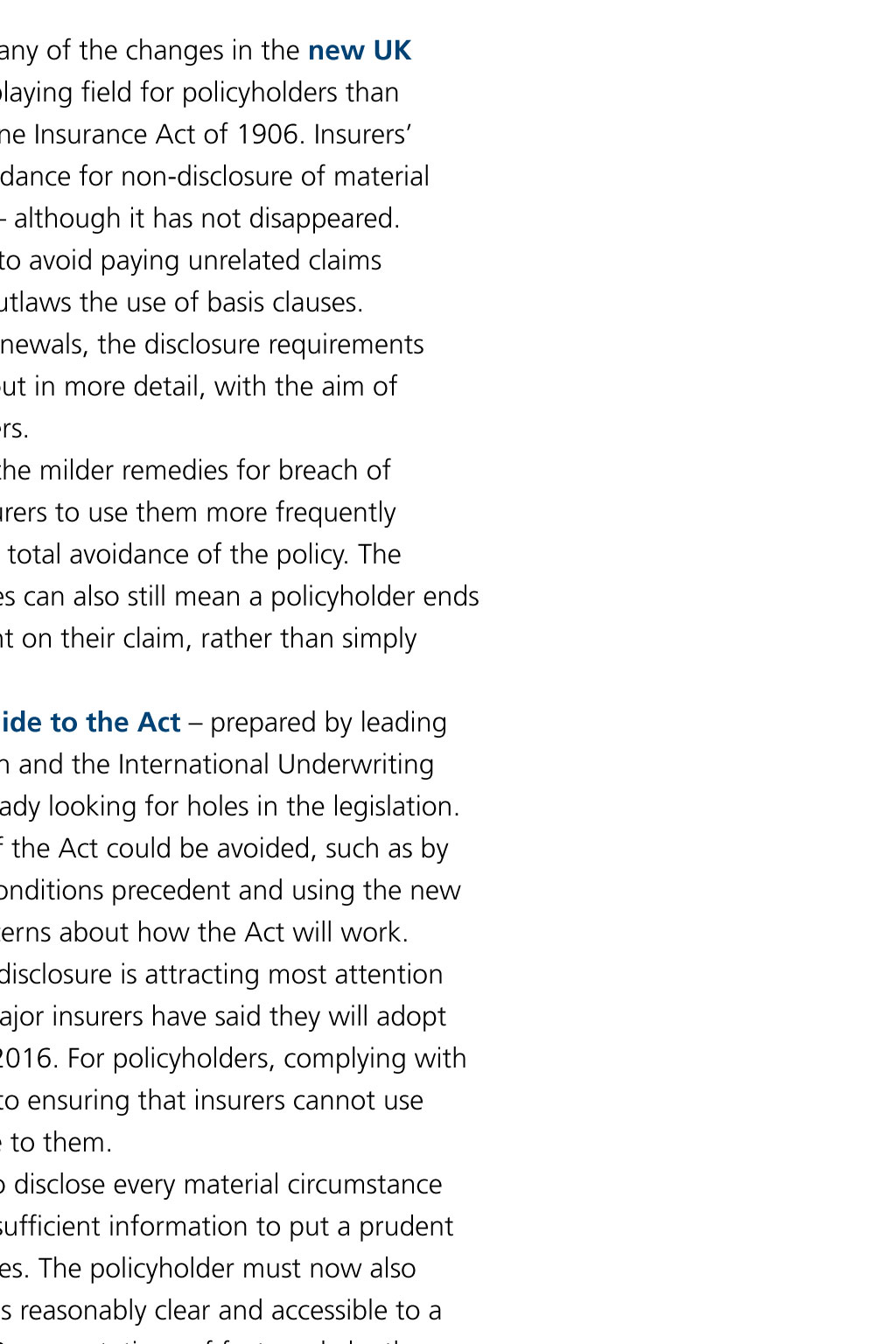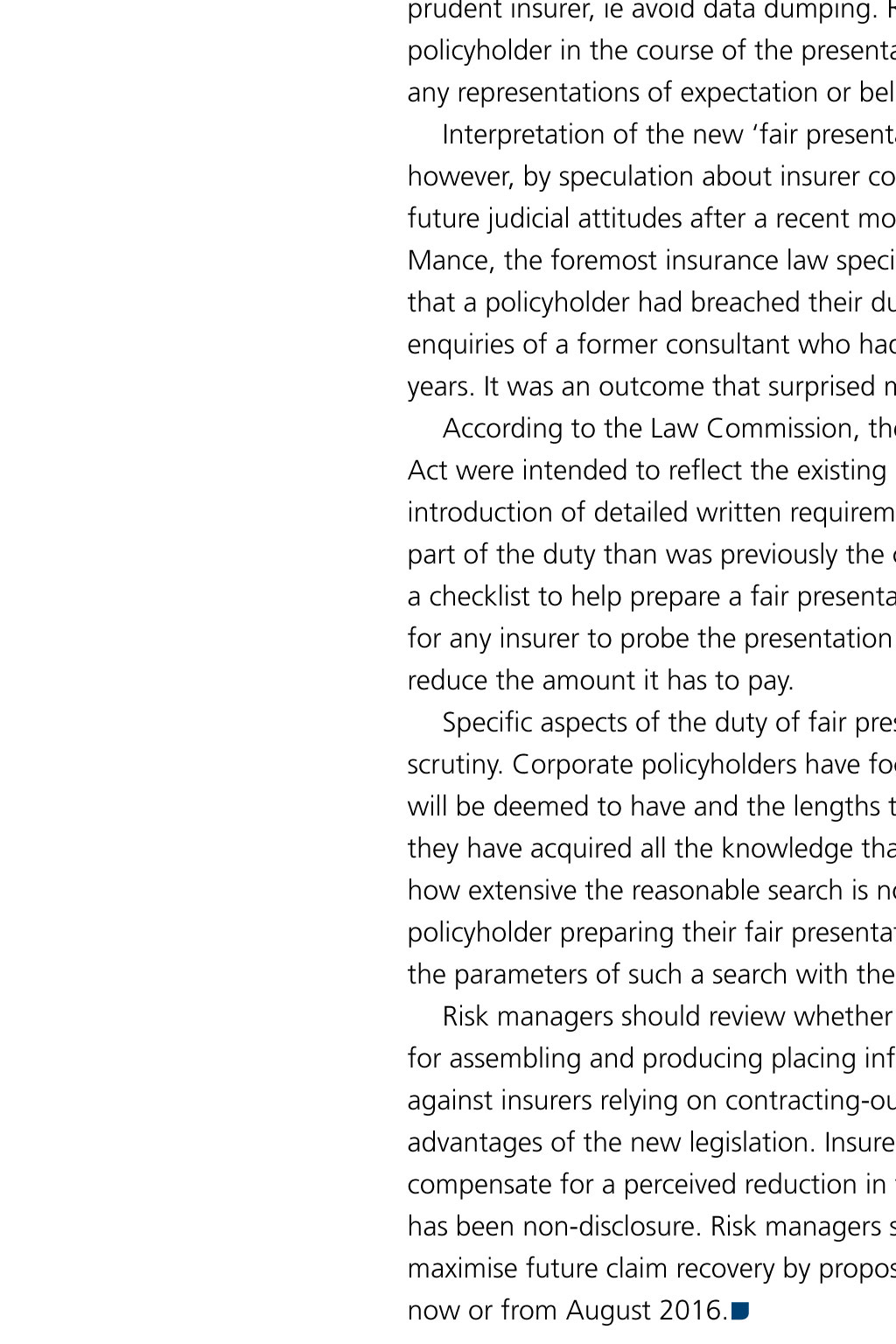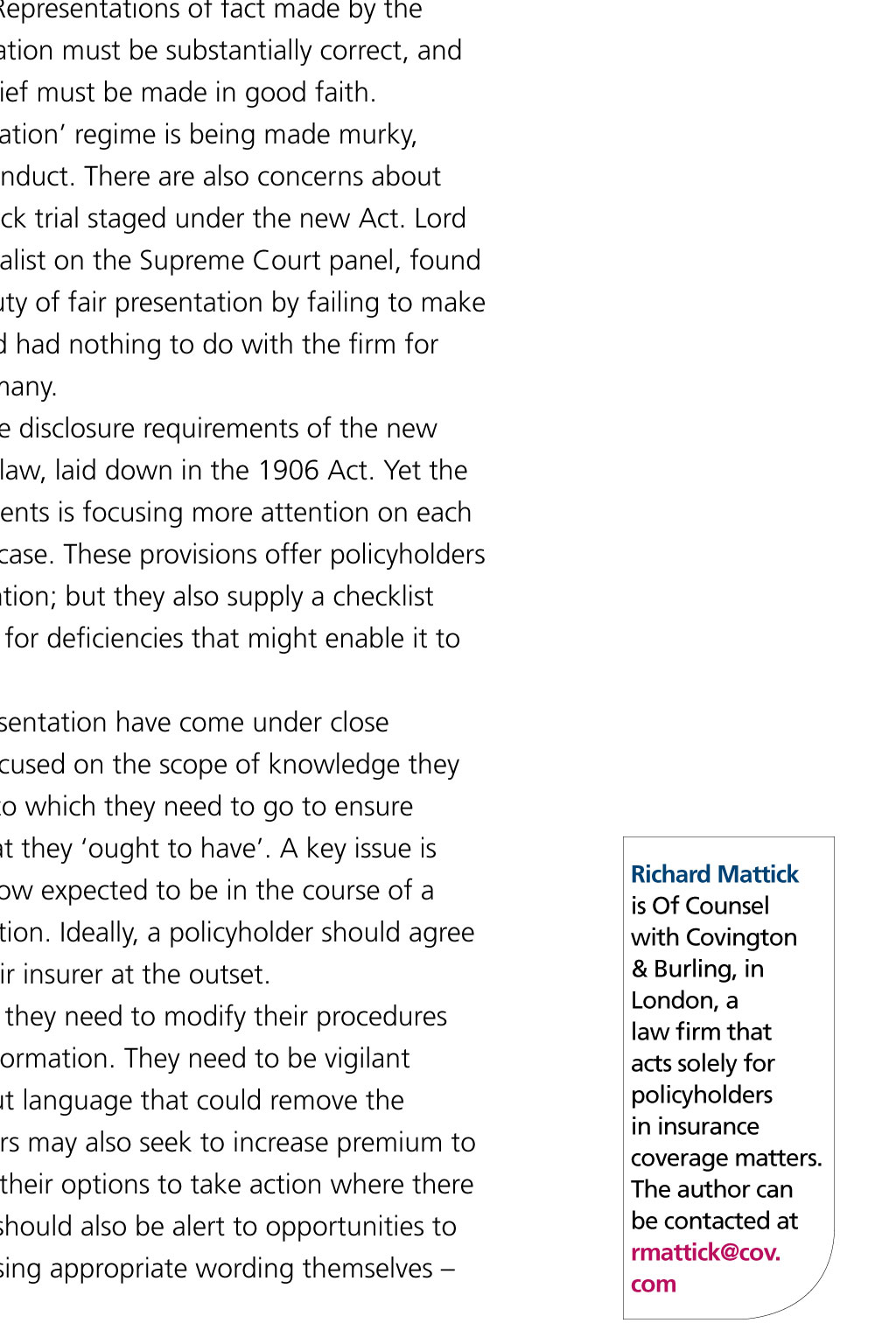
















InsuRanCe VAsAbii / shutterstocK FInDInG The THE nEW Uk InSURAnCE ACT WILL COME InTO fULL EffECT In AUGUST 2016, BUT InSURERS ARE ALREADy SAID TO BE LOOkInG fOR LOOPHOLES In THE RULES. RISk MAnAGERS nEED TO ACT nOW If THEy ARE nOT TO BE CAUGHT OUT, SAyS RICHARD MATTICK youll perhaps be labelled a prophet of doom, always looking on the bleak side T here is no doubt that, on paper, many of the changes in the new Uk Insurance Act offer a more level playing field for policyholders than did the old law, based on the Marine Insurance Act of 1906. Insurers nuclearweapon remedy of blanket avoidance for non-disclosure of material facts on placement has been weakened although it has not disappeared. Theirability to use breaches of warranty to avoid paying unrelated claims has alsobeen curtailed. The legislation outlaws the use of basis clauses. Most significantly for new policies and renewals, the disclosure requirements for placing new business have been set out in more detail, with the aim of providinggreater certainty to policyholders. There are suggestions, however, that the milder remedies for breach of disclosure obligations will encourage insurers to use them more frequently thanthey did when the only remedy was total avoidance of the policy. The supposedly more proportionate remedies can also still mean a policyholder ends up having to accept a substantial discount on their claim,rather than simply paying a higher retrospective premium. One only has to read the practical guide to the Act prepared by leading lawyers for the Lloyds Market Association and the International Underwriting Association to see that insurers are already looking for holes in the legislation. References to ways in which the effect of the Act could be avoided, such as by recasting basis clauses or warranties as conditions precedent and using the new contracting-out regime, only add to concerns about how the Act will work. The new formulation of the duties of disclosure is attracting most attention now, as renewals approach, and some major insurers have said they will adopt the provisions of the Act before August 2016. For policyholders, complying with the obligation of fair presentation is key to ensuring that insurers cannot use avoidance, or the new remedies available to them. The new Act requires a policyholder to disclose every material circumstance they know or ought to know, or to give sufficient information to put a prudent insurer on notice to make further enquiries. The policyholder must now also make the presentation in a manner that is reasonably clear and accessible to a prudent insurer, ie avoid data dumping. Representations of fact made by the policyholder in the course of the presentation must be substantially correct, and any representations of expectation or belief must be made in good faith. Interpretation of the new fair presentation regime is being made murky, however, by speculation about insurer conduct. There are also concerns about future judicial attitudes after a recent mock trial staged under the new Act. Lord Mance, the foremost insurance law specialist on the Supreme Court panel, found that a policyholder had breached their duty of fair presentation by failing to make enquiries of a former consultant who had had nothing to do with the firm for years. It was an outcome that surprised many. According to the Law Commission, the disclosure requirements of the new Act were intended to reflect the existing law, laid down in the 1906 Act. Yet the introduction of detailed written requirements is focusing more attention on each part of the duty than was previously the case. These provisions offer policyholders a checklist to help prepare a fair presentation; but they also supply a checklist for any insurer to probe the presentation for deficiencies that might enable it to reduce the amount it has to pay. Specific aspects of the duty of fair presentation have come under close scrutiny. Corporate policyholders have focused on the scope of knowledge they will be deemed to have and the lengths to which they need to go to ensure they have acquired all the knowledge that they ought to have. A key issue is how extensive the reasonable search is now expected to be in the course of a policyholder preparing their fair presentation. Ideally, a policyholder should agree the parameters of such a search with their insurer at the outset. Risk managers should review whether they need to modify their procedures for assembling and producing placing information. They need to be vigilant against insurers relying on contracting-out language that could remove the advantages of the new legislation. Insurers may also seek to increase premium to compensate for a perceived reduction in their options to take action where there has been non-disclosure. Risk managers should also be alert to opportunities to maximise future claim recovery by proposing appropriate wording themselves now or from August 2016. Richard Mattick is Of Counsel with Covington & Burling, in London, a law firm that acts solely for policyholders in insurance coverage matters. The author can be contacted at rmattick@cov. com